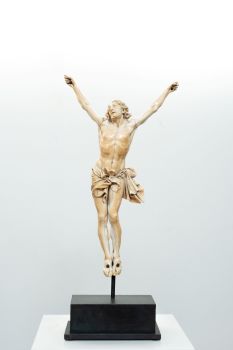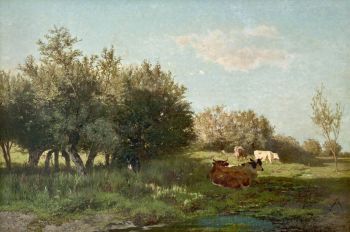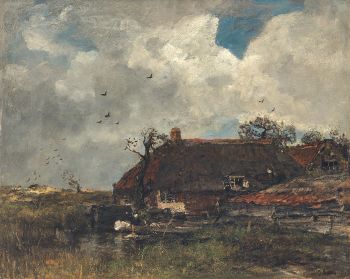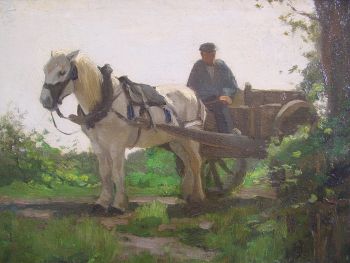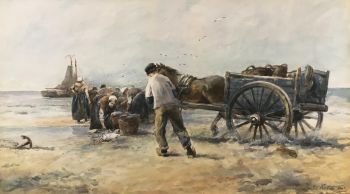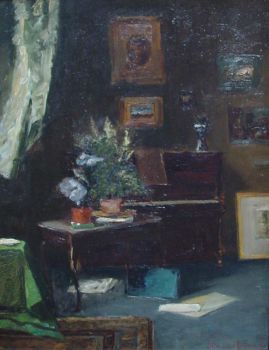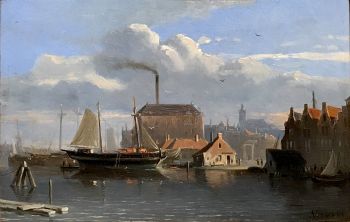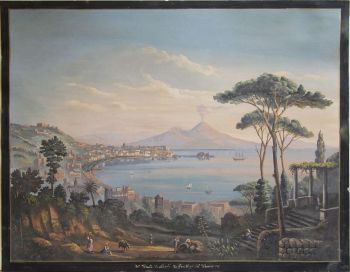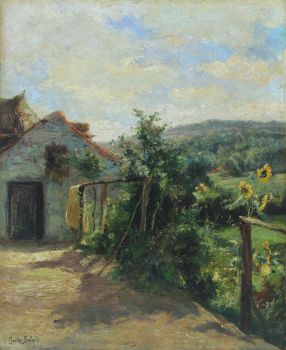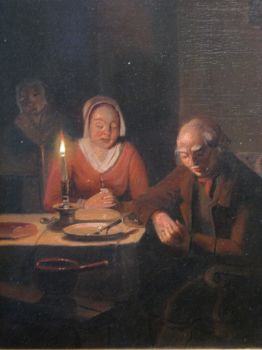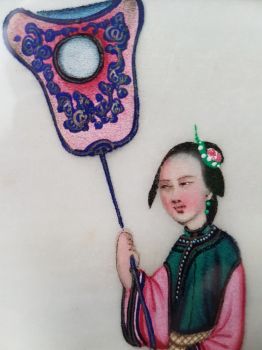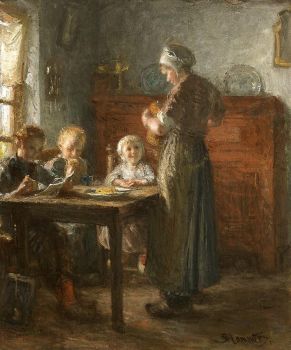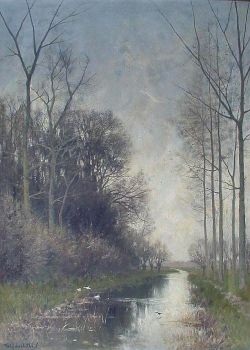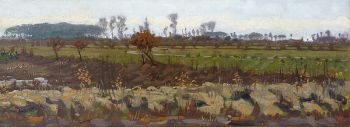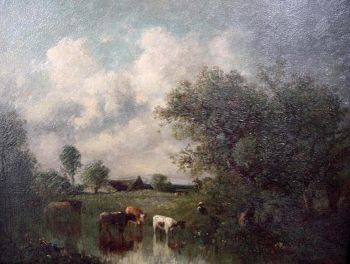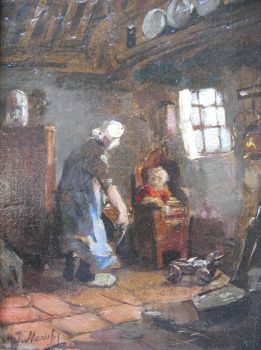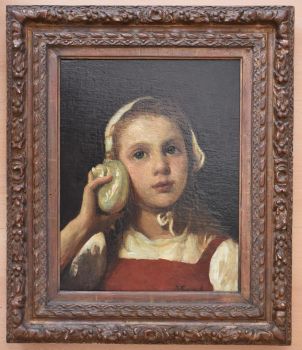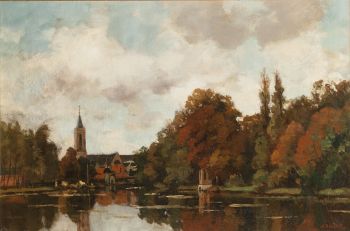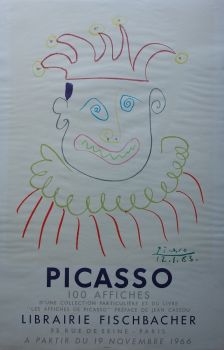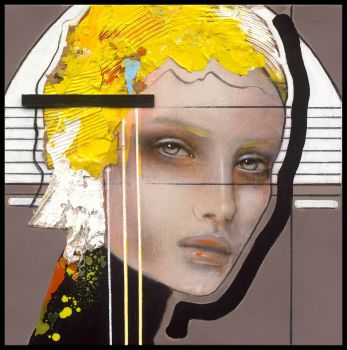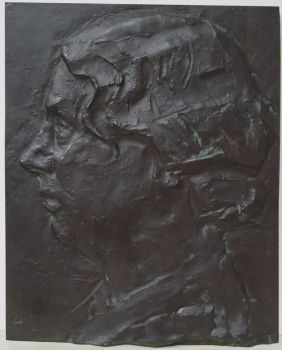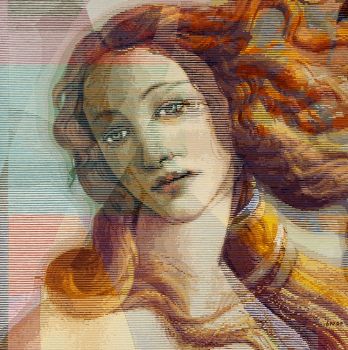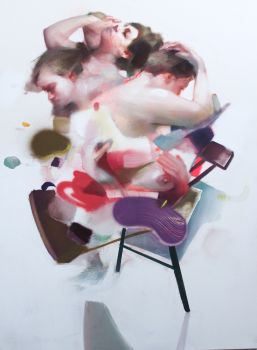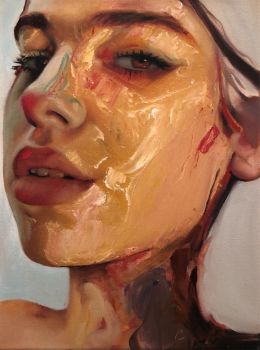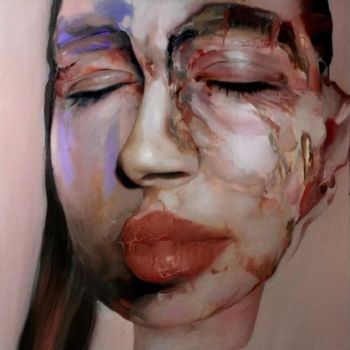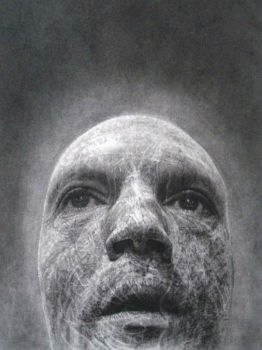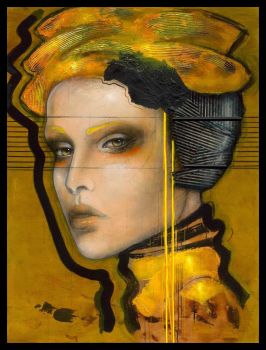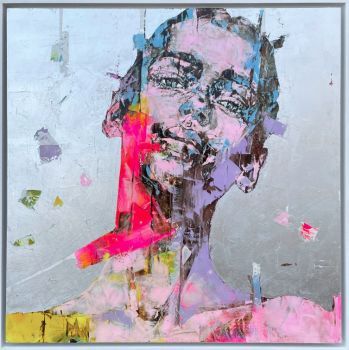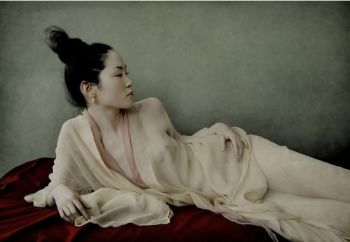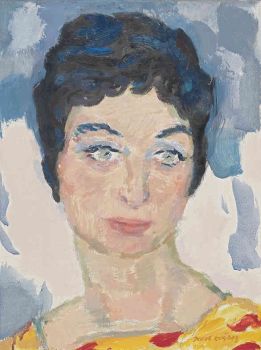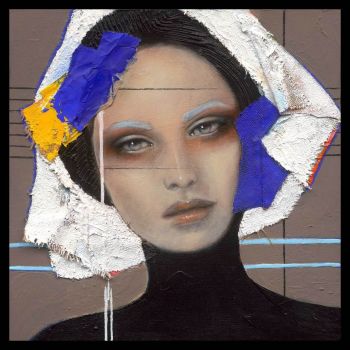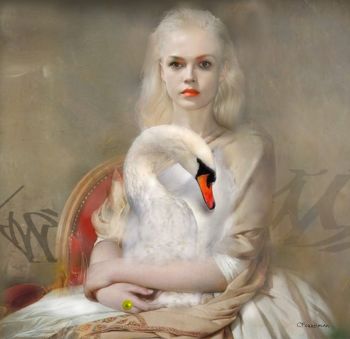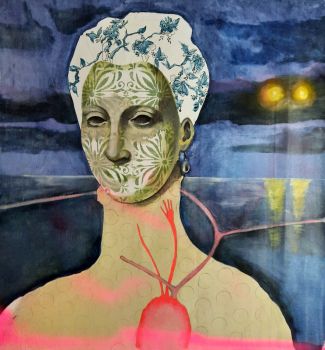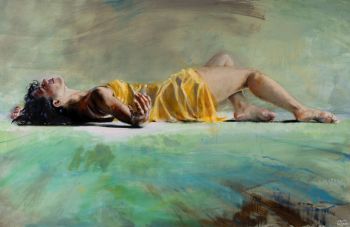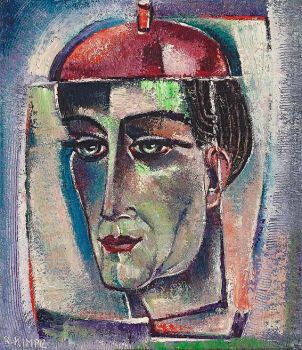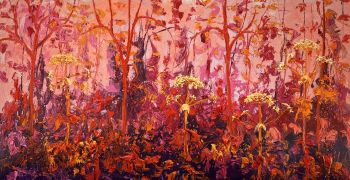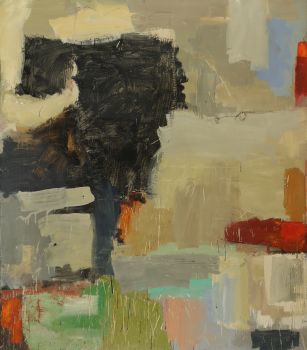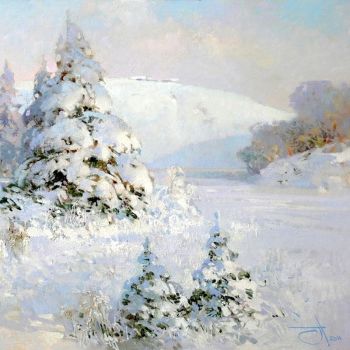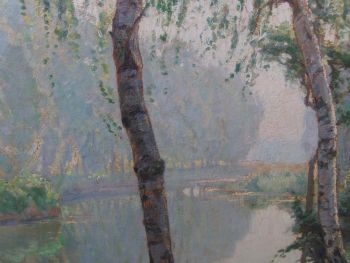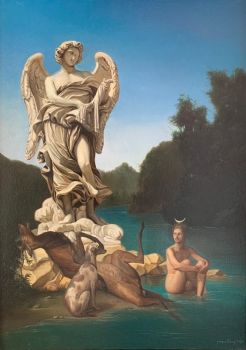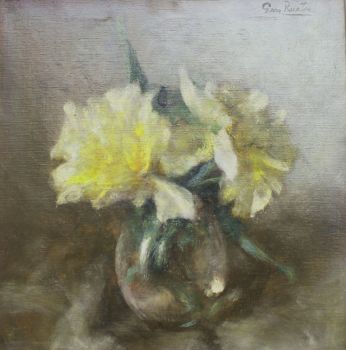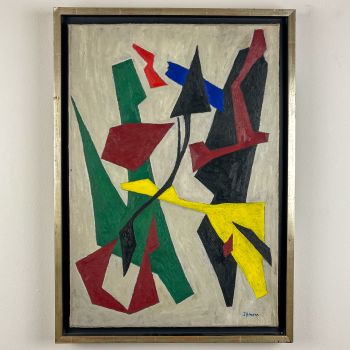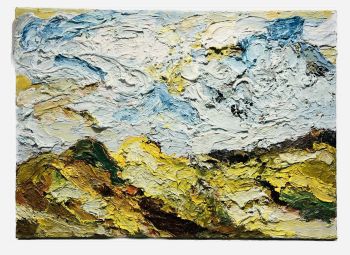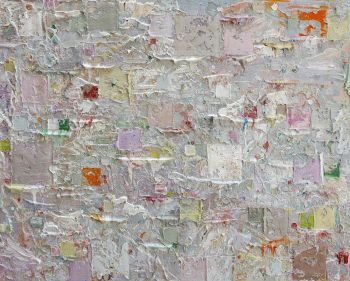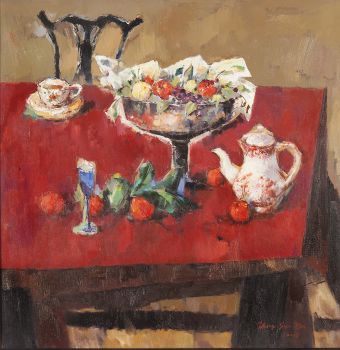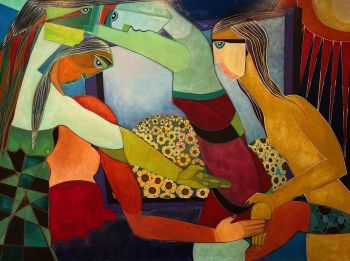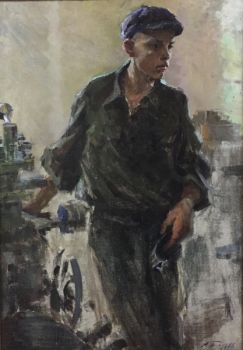19th Century French School Portrait of a flower seller 1790 - 1840
Artista Desconocido
Óleo sobre lienzo original
59 ⨯ 53 cm
ConditionGood
€ 4.995
Olischlager Antiquairs
- Sobre la obra de arteFrench School, 19th Century Probably Jean-Claude Bonnefond Portrait of a Lily of the Valley Seller Oil on canvas (original canvas) 59.5 x 53 cm
Jean-Claude Bonnefond (1796–1860) was a French painter whose work spanned the transition between Neoclassicism and Romanticism, with a particular interest in genre scenes. His style reflects a blend of these two movements, characterized by detailed depictions of everyday life, expression of emotion, and a rich use of color. Here are some key characteristics of Bonnefond's style Bonnefond is best known for his genre scenes, depicting ordinary people in simple, everyday situations. This reflects a departure from the grand historical and mythological themes of Neoclassicism, in favor of the Romantic interest in human emotion and individual experience. Emphasis on light and color: He mastered the use of light, which often brought warmth and intimacy to his scenes. His colour palette was rich, yet natural, contributing to the realistic yet gentle atmosphere of his works. Romantically influenced, Bonnefond's works often evoked emotions, whether silent contemplation or the difficulties of everyday life. This fits Romanticism's emphasis on emotional depth and individual subjectivity, contrasting with the formal restraint of Neoclassicism.
Provenance:
South German private collection
Dutch private collection - Sobre el artista
Puede suceder que un artista o creador sea desconocido.
Algunas obras no deben determinarse por quién está hecho o por (un grupo de) artesanos. Algunos ejemplos son estatuas de la Antigüedad, muebles, espejos o firmas que no son claras o legibles, pero también algunas obras no están firmadas en absoluto.
También puedes encontrar la siguiente descripción:
•"Atribuido a …." En su opinión, probablemente una obra del artista, al menos en parte.
•“Estudio de….” o “Taller de” En su opinión, una obra ejecutada en el estudio o taller del artista, posiblemente bajo su supervisión
•“Círculo de…” En su opinión, una obra del período del artista que muestra su influencia, estrechamente asociado con el artista pero no necesariamente su alumno.
•"Estilo de …." o “Seguidor de…”. En su opinión, una obra ejecutada al estilo del artista pero no necesariamente por un alumno; puede ser contemporáneo o casi contemporáneo
•"Manera de …." En su opinión una obra al estilo del artista pero de fecha posterior
•"Después …." En su opinión, una copia (de cualquier fecha) de una obra del artista
•“Firmado…”, “Fechado…” o “Inscrito” En su opinión, la obra ha sido firmada/fechada/inscrita por el artista. La adición de un signo de interrogación indica un elemento de duda.
•“Con firma…”, “Con fecha…”, “Con inscripción…” o “Lleva firma/fecha/inscripción” en su opinión la firma/fecha/inscripción ha sido añadida por alguien que no es el artista
¿Está interesado en comprar esta obra de arte?
Artwork details
Related artworks
Artista Desconocido
Set of eight gouache drawings1799 - 1801
Precio a consultarRobert Schreuder Antiquair
1 - 4 / 12Artista Desconocido
Pulseira de diamante do século 18 com entalhes de 2.000 anos1790
€ 23.000Adin Fine Antique Jewellery
 curada por
curada porDanny Bree
Artista Desconocido
Set Franse Empire Pendules / Empire Lectura penduleearly 19th
Precio a consultarKuipers Kunst & Antiek
Artista Desconocido
Set of eight gouache drawings1799 - 1801
Precio a consultarRobert Schreuder Antiquair
1 - 4 / 15Gijsbertus Jan Sijthoff
Interior scene with a woman doing needlework1890 - 1920
Precio a consultarVan der Aalst Fine Art
Gerard Bilders
The 'Uiterwaarden' at Oosterbeek (flood plains)1861
Precio a consultarStudio 2000 Art Gallery
Carel Nicolaas Storm van 's Gravesande
My studio in Bruxelles1841 - 1924
Precio a consultarKunsthandel Pygmalion
Fredericus Jacobus van Rossum du Chattel
Poldervaart in the Vecht river region1899 - 1901
Precio a consultarKunsthandel Pygmalion
1 - 4 / 24Lambertus Zijl
Portrait of Juliana, queen of the Netherlands (1948-1990)1900 - 1950
Precio a consultarKunsthandel Pygmalion
1 - 4 / 24- 1 - 4 / 24
- 1 - 4 / 5






